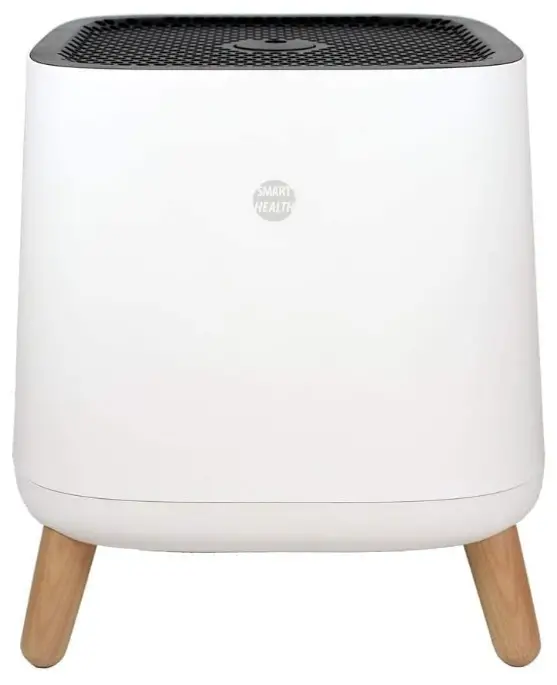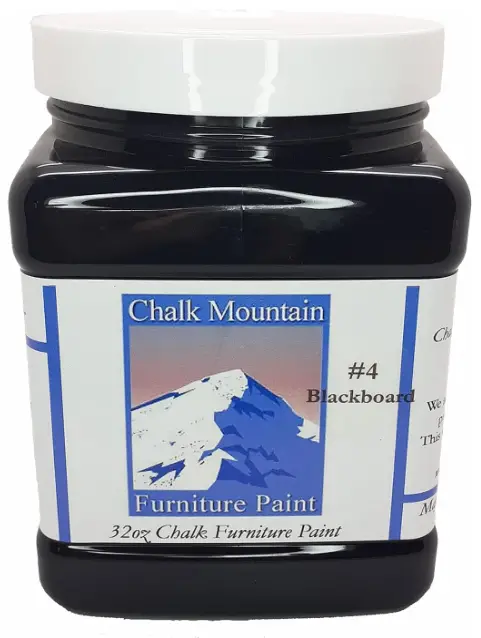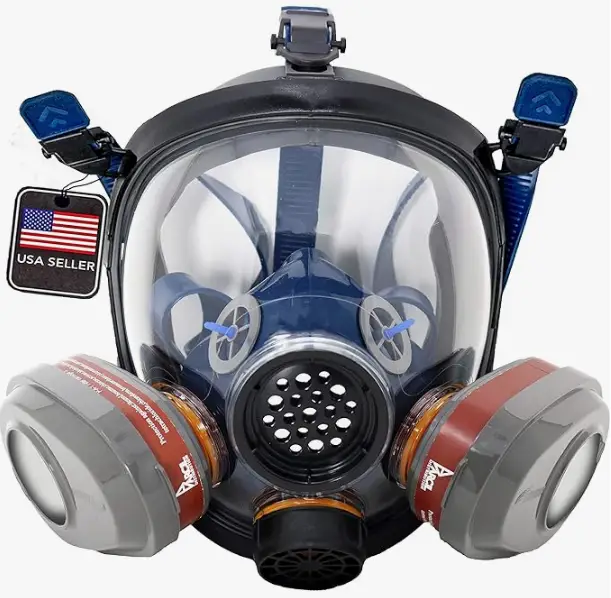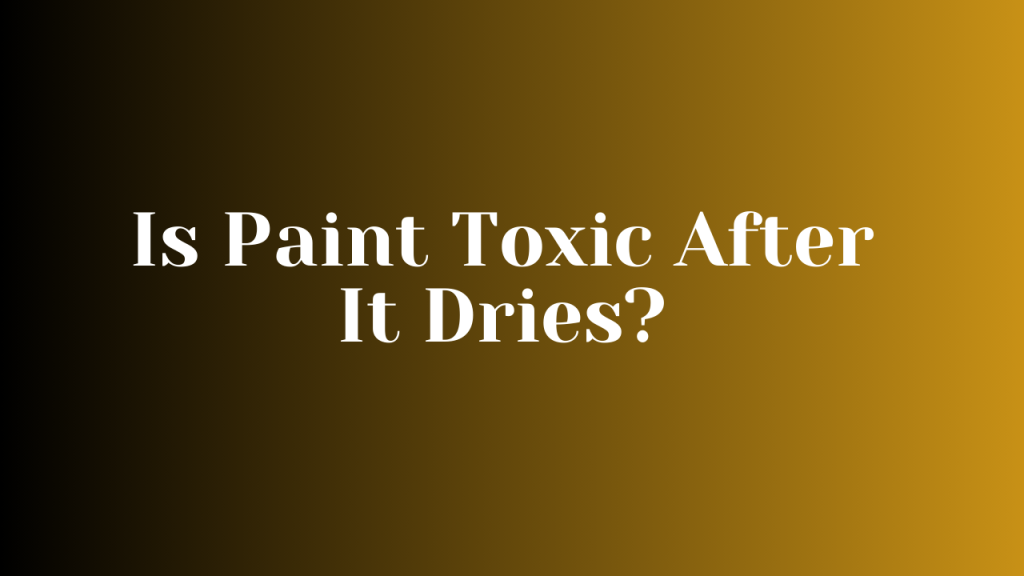Is paint toxic after it dries? Are you concerned about the toxicity of paint once it dries? It’s a valid question, as many people wonder if the chemicals in paint can still pose a risk long after it has dried on a surface. In this article, we will explore the topic of whether paint is toxic after it dries, providing you with the necessary information to make informed decisions about the use and handling of paint in your home or workplace.
When paint dries, it forms a hard, solid surface, which may lead you to believe that it is no longer a threat. However, it’s important to understand the presence of volatile organic compounds (VOCs) in paint.
VOCs are chemicals that evaporate at room temperature, and they are responsible for that distinct paint smell. Even after the paint has dried, VOCs can continue to be released into the air, which can potentially cause health problems if inhaled in high concentrations.
In the next sections, we will delve into the dangers of dried paint and discuss ways to minimize your exposure to VOCs. So, let’s dive in and learn more about the toxicity of paint after it dries.
Understand Volatile Organic Compounds (VOCs)
Did you know that paint can release harmful chemicals called VOCs even after it dries? Understanding the health effects of these volatile organic compounds is crucial for your safety.
VOCs are chemicals that can easily evaporate at room temperature, and they are commonly found in many household products, including paint. When you paint a room, the paint may emit VOCs into the air as it dries, and these chemicals can linger for a long time, affecting indoor air quality.
Exposure to high levels of VOCs can lead to a range of health issues. Some common health effects of VOC exposure include eye, nose, and throat irritation, headaches, dizziness, and even respiratory problems. Long-term exposure to VOCs has been associated with more serious health problems, such as damage to the liver, kidneys, and central nervous system.
Certain VOCs, like formaldehyde, have even been classified as carcinogens, meaning they have the potential to cause cancer. Therefore, it’s important to be aware of the VOC content in the paint you use and to take precautions to minimize your exposure to these harmful chemicals.
Dangers of Dried Paint
Imagine yourself walking into a room filled with the lingering scent of a dried substance that poses potential harm to your health. This is the reality when it comes to dried paint. While it may seem harmless because it is no longer wet, there are still health risks associated with inhaling dried paint particles. These particles can become airborne and easily inhaled, leading to respiratory issues such as asthma or allergies.
Additionally, some paints contain harmful chemicals such as lead or asbestos, which can be released into the air when the paint dries and becomes brittle. This further increases the health risks, as exposure to these substances can cause serious long-term health problems.
To give you a better understanding of the dangers of dried paint, let’s take a visual journey. Imagine a room with peeling walls covered in multiple layers of dried paint. In the corner, you spot a pile of paint chips that have flaked off over time. The air in the room feels heavy, filled with invisible particles that could potentially harm your lungs. Now, let’s take a closer look at the table below, which illustrates the health risks associated with inhaling dried paint particles and the environmental impact of improperly disposing of dried paint.
| Health Risks | Environmental Impact |
|---|---|
| Respiratory issues | Soil and water contamination |
| Allergic reactions | Harm to plants and animals |
| Exposure to harmful chemicals | Pollution of air and water |
| Long-term health problems | Damage to ecosystems |
| Increased risk of lead or asbestos poisoning | Disruption of natural balance |
Dried paint may no longer be wet, but it still poses health risks and environmental hazards. Inhaling dried paint particles can lead to respiratory issues and exposure to harmful chemicals. Improper disposal of dried paint can contaminate soil and water and harm plants and animals. It is important to be aware of these dangers and take proper precautions when dealing with dried paint to ensure the well-being of both yourself and the environment.
Minimizing Exposure to VOCs
Taking steps to minimize exposure to VOCs is essential for protecting your health and the environment. VOCs, or volatile organic compounds, are chemicals that can be released into the air as gases from certain paints and other products. Breathing in high levels of VOCs can cause a range of health issues, including respiratory problems, headaches, and dizziness.
To minimize these health risks, it’s important to choose paints that have low VOC content or are labeled as ‘zero VOC.’ These eco-friendly alternatives are made with fewer harmful chemicals, reducing the impact on both your health and the environment.
In addition to using low or zero-VOC paints, there are other steps you can take to further minimize exposure to these toxic substances. One option is to ensure proper ventilation in the area where you’re painting. Open windows and use fans to circulate fresh air, helping to dissipate any VOCs that may be released during the painting process.
Another way to reduce exposure is to limit the amount of time spent in the painted area, especially immediately after painting. Allowing the paint to fully dry and cure before spending extended periods in the room can help minimize the inhalation of any remaining VOCs.
By taking these precautions and considering eco-friendly alternatives, you can protect your health and reduce the negative impact on the environment when using paint.
Safe Handling and Disposal of Paint
Properly handling and disposing of paint is crucial to ensuring the safety of both individuals and the environment.
When it comes to safe handling, it’s important to store paint in a cool and dry place. Extreme temperatures can cause paint to deteriorate, making it less effective and potentially hazardous.
It’s also essential to keep paint containers tightly sealed to prevent spills and leaks. This will not only protect the paint from drying out but also minimize the risk of accidental exposure to toxic fumes or ingestion.
In addition to safe storage, proper ventilation is key when handling paint. Whether you’re painting indoors or outdoors, it’s important to work in a well-ventilated area. This will help to dissipate any fumes released by the paint, reducing the risk of inhalation.
If you’re painting indoors, open windows and use fans to improve air circulation. If you’re working outdoors, choose a location with plenty of fresh air. Remember to wear appropriate personal protective equipment, such as gloves and a mask, to further minimize exposure to any potentially harmful substances.
By practicing safe handling and proper ventilation, you can ensure the safe use and disposal of paint, protecting both yourself and the environment.
What to do after inhaling paint fumes?
If you’ve been exposed to paint fumes and are experiencing symptoms like dizziness, headaches, or nausea, the first step is to get to fresh air immediately. Open windows and doors to ventilate the space. If symptoms persist or worsen, seek medical attention.
How long are paint fumes harmful?
The duration of harmful effects depends on factors such as the type of paint, ventilation, and individual sensitivity. In general, paint fumes can linger for several hours to several days. Adequate ventilation and proper safety measures can help minimize the risk.
Paint poisoning symptoms?
Paint poisoning symptoms can include headaches, dizziness, nausea, difficulty breathing, and irritation of the eyes, nose, or throat. In severe cases, prolonged exposure to high levels of VOCs may lead to more serious health issues.
Can paint fumes kill you?
While short-term exposure to typical paint fumes is unlikely to be fatal, prolonged exposure to high concentrations of certain toxic chemicals in paint can have severe health consequences. It is essential to prioritize safety and follow recommended precautions.
Is paint smell harmful?
The smell of paint is often associated with the release of VOCs, which can be harmful when inhaled in large quantities. While the odor alone may not be immediately harmful, it is an indicator of potential exposure to harmful chemicals.
Is wall paint toxic?
Many paints contain VOCs, which can be toxic in high concentrations. Water-based or low-VOC paints are considered less toxic than traditional oil-based paints. When choosing paint, look for products labeled as low-VOC or VOC-free to minimize toxicity.
Breathing paint fumes while sleeping?
It is not advisable to sleep in a freshly painted room. The concentration of VOCs is likely to be higher in a closed space with poor ventilation. Ensure the room is well-ventilated, and consider using air purifiers with activated carbon filters to help reduce fumes.
Home remedy for inhaling paint?
If you’ve inhaled paint fumes and are experiencing mild symptoms, consider these home remedies:
- Fresh Air: Open windows and doors to increase ventilation.
- Stay Hydrated: Drink plenty of water to help flush out toxins.
- Use Air Purifiers: Air purifiers with activated carbon filters can help remove VOCs from the air.
- Take a Shower: Rinse off to remove any paint particles on your skin and hair.
Recommended Products:
Air Purifiers:

Look for models with HEPA filters and activated carbon filters to effectively capture and neutralize VOCs.
Low-VOC or VOC-Free Paints:

Choose paints labeled as low-VOC or VOC-free for a safer painting experience.
Respirators:

If you need to be in an area with strong paint fumes, consider using a respirator with organic vapor cartridges to protect your respiratory system.
Conclusion
In conclusion, it’s important to be aware of the potential dangers of dried paint. While paint may not be toxic once it’s fully dried, it can still release harmful volatile organic compounds (VOCs) into the air.
These VOCs can contribute to indoor air pollution and may have negative effects on your health, especially if you’re exposed to them for long periods of time.
To minimize your exposure to VOCs, it’s recommended to choose low-VOC or zero-VOC paints when possible. These paints have lower levels of harmful chemicals and are considered safer for indoor use.
Additionally, it’s important to properly ventilate the area when painting and for a few days after to allow any remaining VOCs to dissipate.
When it comes to handling and disposing of paint, it’s crucial to follow the proper safety guidelines. Store paint in a cool, dry place away from children and pets. When disposing of paint, check with your local waste management facility for proper disposal methods, as throwing it in the trash or pouring it down the drain can harm the environment.
By understanding the potential dangers of dried paint and taking the necessary precautions, you can ensure a safer and healthier environment for yourself and those around you. So, next time you paint, make sure to keep these tips in mind to minimize your exposure to harmful VOCs and to properly handle and dispose of paint.










